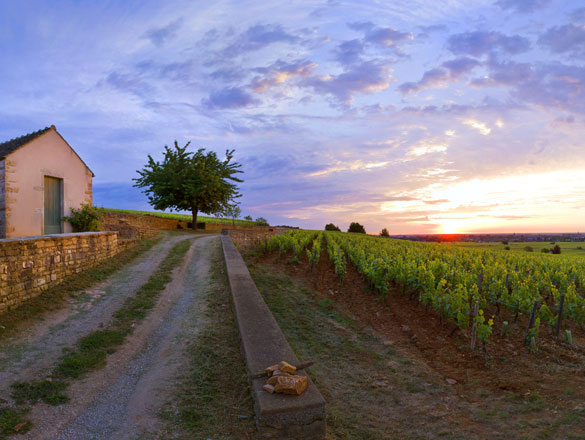

The vineyards of Bourgogne produce some great wines with a historical and international reputation. However, the region is not simply limited to its iconic appellations. In addition to its Village Premier Cru and Grand Cru AOCs, it also produces a range of wonderful Régionale and Village appellations to explore.
You will also find a full list of the Bourgogne’s Climats and lieux-dits on this page.
Check out the complete list of the 84 Bourgogne appellations.
However, your exploration has only just begun. Bourgogne wines have never before offered such high quality. Besides our range of internationally celebrated wines, try some of our lesser-known appellations where there are lots of surprises in store.
And for a fun way to find out more about the wines on offer, try out our “Which Bourgogne wine is right for me?” quiz, or check out Bourgogne Maps to take an interactive tour of the region.
Village appellation
VIGNOBLE DE LA CÔTE DE BEAUNE
11 septembre 1936
Reds - Pinot Noir.
Whites - Chardonnay.
Area under production*:
1 hectare (ha) = 10,000 m² = 24 ouvrées.
Reds: 333.41 ha (including 257.99 ha Premier Cru).
Whites: 66.36 ha (including 42.21 ha Premier Cru).
Average annual yield**:
1 hectolitre (hl) = 100 litres = 133 bottles.
Reds: 11,648 hl (including 9,020 hl Premier Cru).
Whites: 2,220 hl (including 1,484 hl Premier Cru).
*In 2022 **5-year average, 2017-2021
Appellation Village of the Côte de Beaune region (Côte-d’Or).
This appellation includes 42 Premiers Crus Climats.
Producing commune: Beaune.
The appellation BEAUNE and BEAUNE PREMIER CRU may be followed by
the name of the Climat of origin.

Small differences appear, depending on the exact location. Wines from the Northern end of the commune are more often intense and powerful, and those from the southern end are smoother and fuller.
Red: this wine has a striking and vivid colour - a luminous scarlet, introducing aromas of black fruits (blackcurrant, blackberry) and red (cherry, gooseberry), as well as humus and underbrush. When older, it is redolent of truffle, leather, and spices. In youth, it charms the palate with the taste of crunchy fresh grape. Firm, upright and full of juice, it evolves with time, revealing a solid and absolutely convincing structure.
White: this wine boasts a silky gold colour, flecked with green. It has a bouquet of almond, dried fruits, bracken, and white flowers. It may be enjoyed either young “on the fruit” or later for its mouth-filling mellowness.

Red: fleshy and generous, the Beaune reveal great aromatic power and solid texture which inevitably partners them with musky and very firm meats such as feathered game, roasted or braised. Cheeses: choose Epoisses, Soumaintrain, Munster, Maroilles...
Serving temperature: 15 to 16°C.
White: their flowery freshness makes them a marvelous match for poultry and veal in creamy sauces, fish tajines, sushi, and grilled sea-fish. When older (and fleshier) they enfold and tame cheeses such as Cîteaux, Comté, and certain goat cheeses.
Serving temperature: 12 to 14°C.

A Burgundian icon and capital of Bourgogne’s wine trade, Beaune takes centre place on the world stage during the annual Hospices de Beaune wine auction.
The Hôtel-Dieu, built in the Flamboyant style, the huge silent cellars of the négociants houses, and the wine-growing domaines of the district all attract countless visitors. The Beaune vineyards are among the most extensive of the Côte. From here comes the Pinot vermilion of the Dukes of Bourgogne- a red wine, aromatic and full of fire, whose reputation goes back to the late Middle Ages. The whites, less common, make the best use of soils suited to the
Chardonnay grape.
The BEAUNE AOC was established in 1936.

In the synclinal of Volnay the Comblanchien limestone disappears into the depths to be replaced by the overlying Rauracian. The slopes are quite steep and the soil (scree-derived black rendzinas) thinnish. On the lower slopes are Argovian marls and deep soils, white, grey or yellow, tinged with red from the iron in the Oxfordian limestone. At the foot of the slope, limestones are mixed with clay. Exposure: east to due south. Altitudes: 220 to 300 metres.
